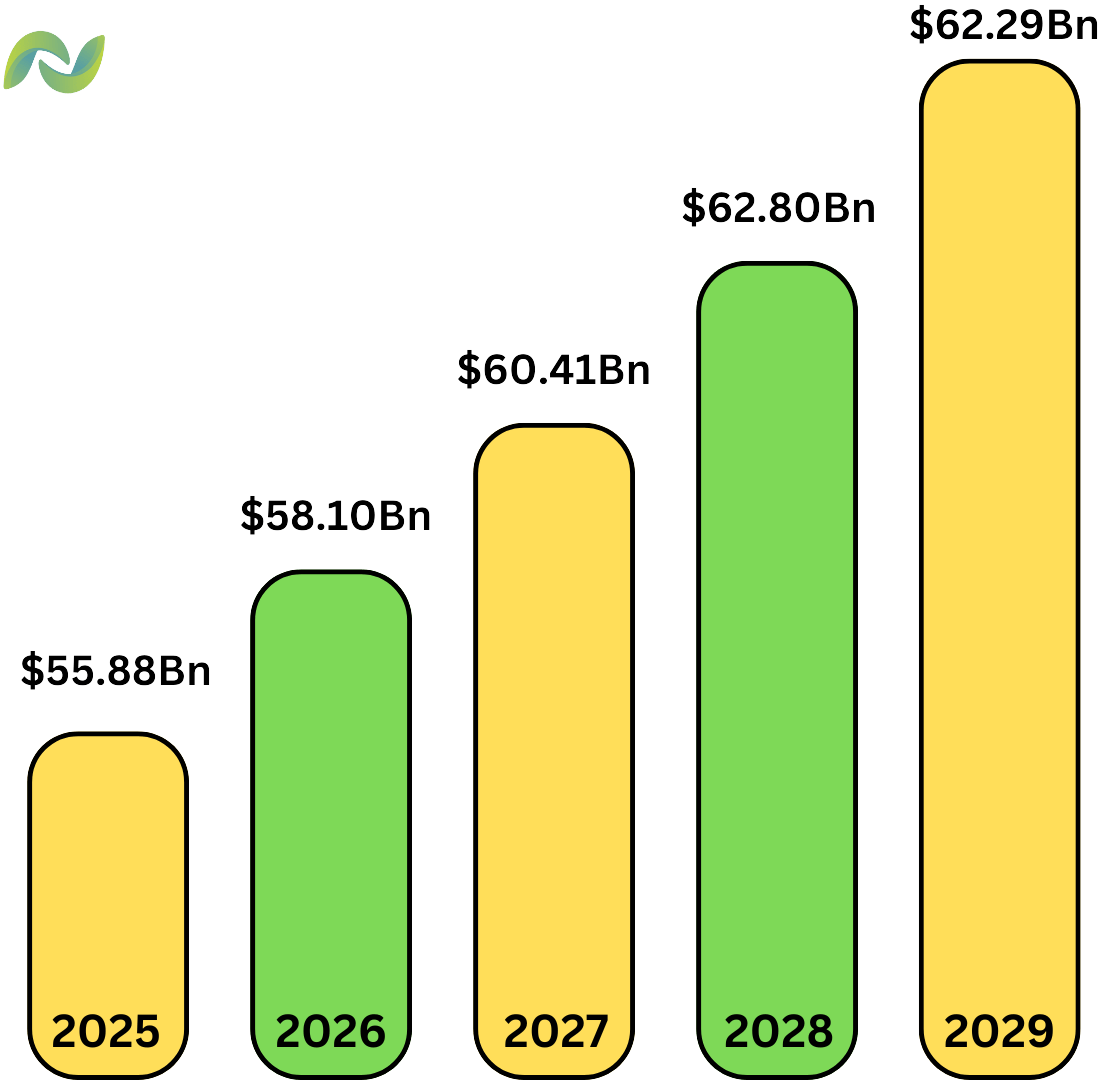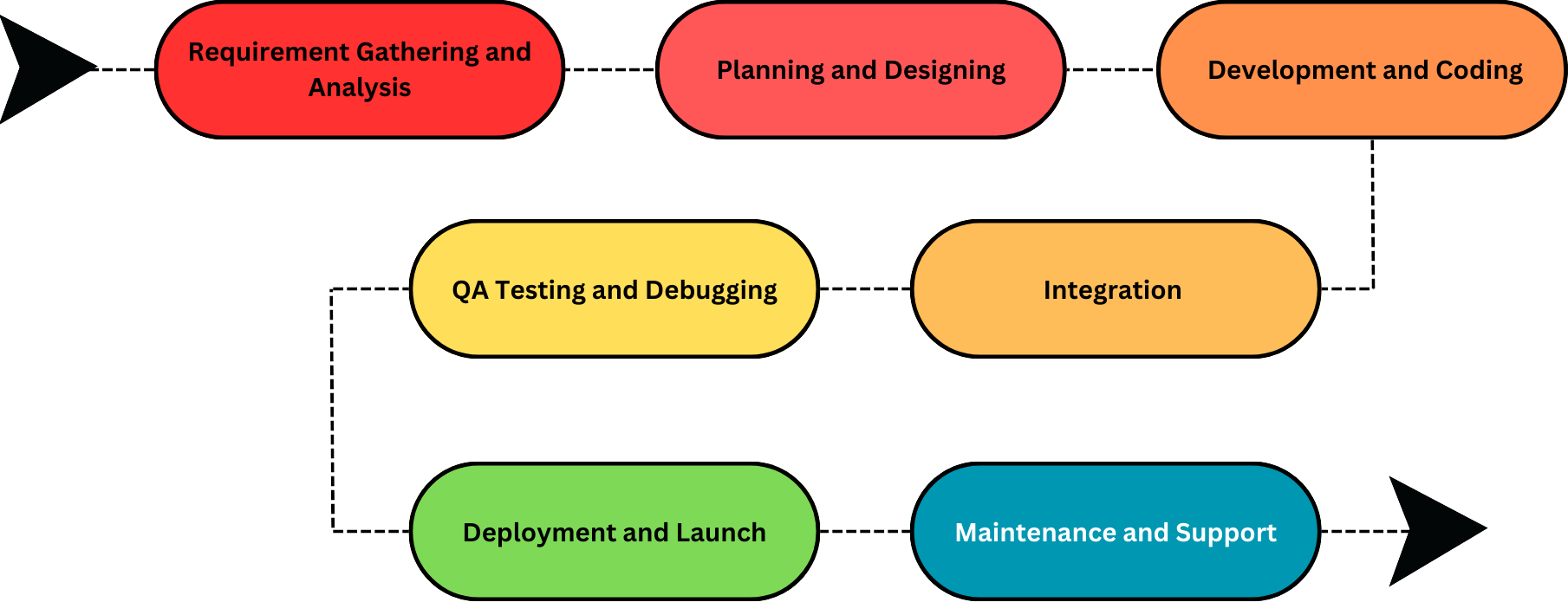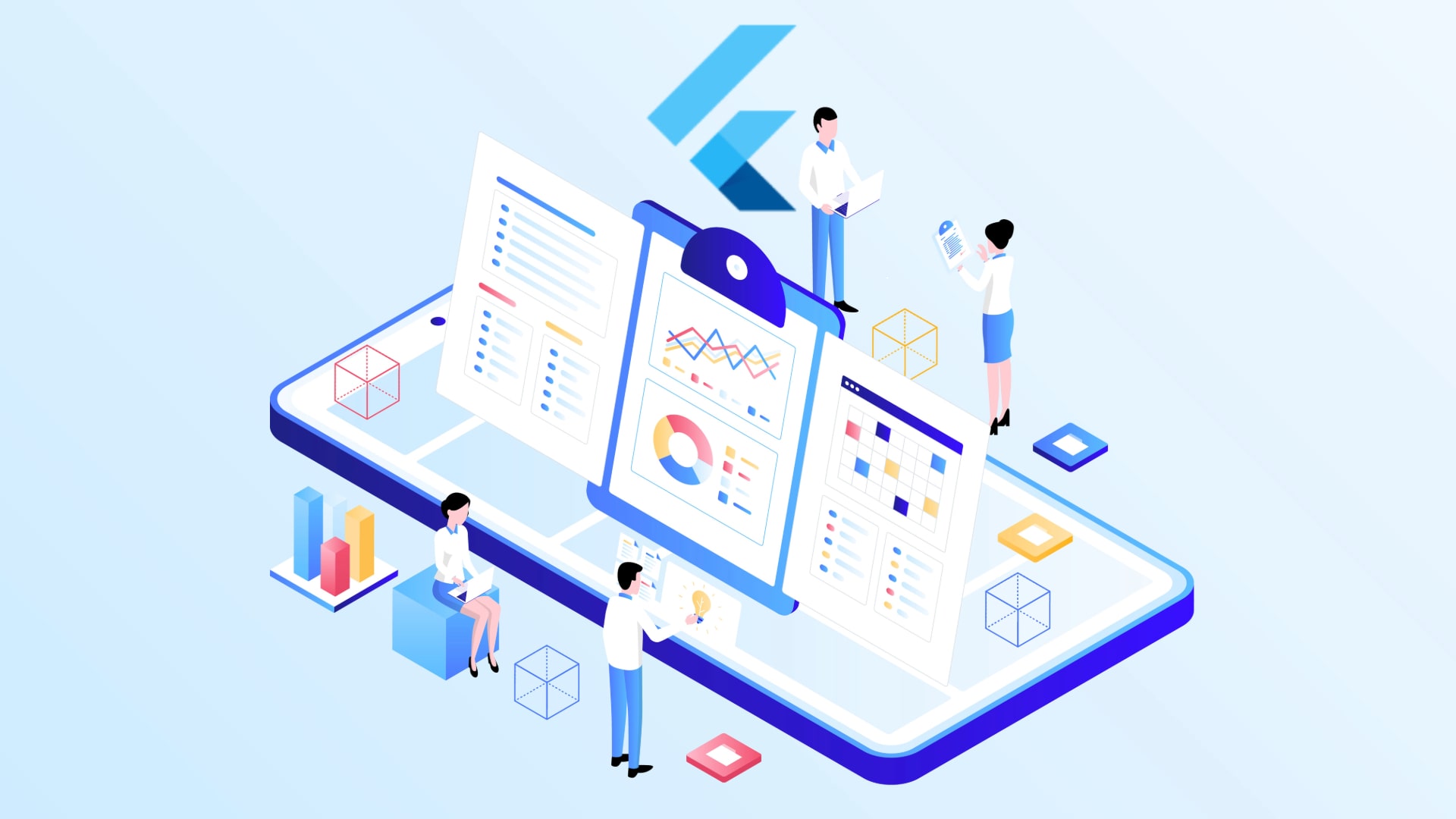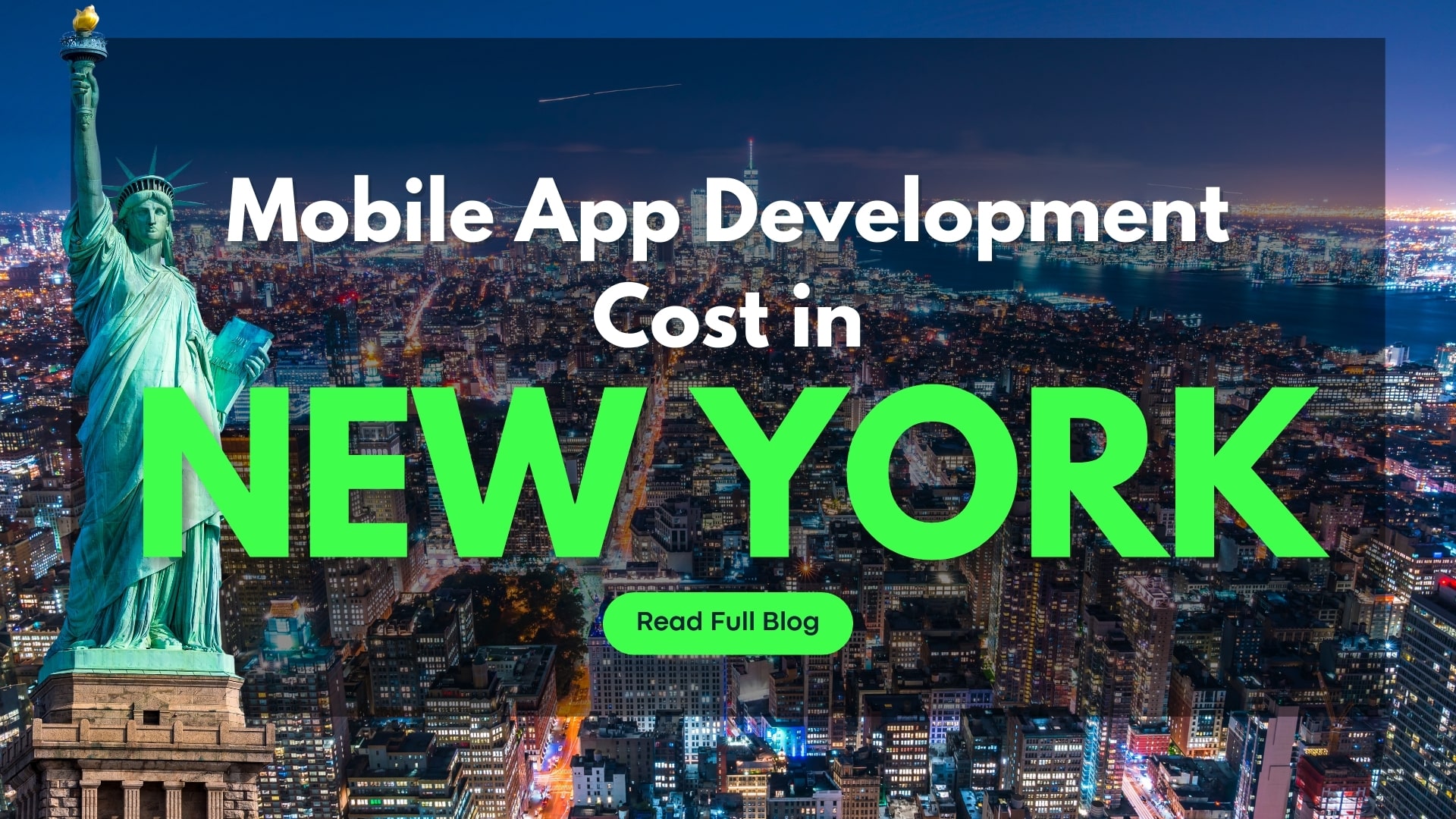How Much Does It Cost to Develop a ERP Software?
In 2025, having ERP software in business will have become a necessity. ERP means Enterprise Resource Planning. It is sophisticated software that is used to manage and automate various business processes of different processes and functions such as Human Resources, Marketing, Finance, Operations, Sales, and many more, and integrates them into one single centralized system. This enables enhanced efficiency and better insights for informed decision-making. But have you ever wondered what is the ERP software development cost? In this guide, we will explore the process, cost, and various other factors that affect the ERP development cost for your business.
Table of Contents
ToggleBenefits of Having ERP Software for Your Business
[1] Streamlined Operations
ERP is meant to streamline business operations by integrating various business functions such as Marketing, Finance, Logistics and Supply Chain, Inventory Management, etc into a centralized system. This helps to remove redundancy of data and increase overall efficiency.
[2] Better Decision-Making
Data is the backbone of an ERP software system. Everything information is data. By utilizing this data and converting it into visualizations (Charts, Bar Graphs, Line charts, etc), businesses can make informed decisions to tackle challenges faster and easily.
[3] Cost-Efficient
ERP systems can be customized as per the size, type, and needs of the business. Moreover, ERP can optimize business processes and reduce errors, enabling businesses to reduce their operational costs to a greater extent.
[4] Enhanced Collaboration
Since ERP is a centralized system, it enables different departments of a business to efficiently share information, enabling teamwork and promoting mutual collaboration.
[5] Regulatory and Legal Compliance
ERP software is designed and developed with the necessary regulations and legal compliance in mind. Many ERP solutions have built-in tools that help businesses stay compliant.
[6] Customer Satisfaction
Customer satisfaction is the main goal of any business. ERP can easily improve business processes like order tracking, customer service, inventory management, etc, thus leading to better customer experience and satisfaction.
[7] Automation
ERP automates manual tasks such as payroll processing, invoice generation, order processing, etc, and helps to save time and reduce errors.
[8] Scalable
The best thing about ERP is that it is highly scalable. New modules can be easily added or modified as per the changing business requirements.
Global Market Statistics of ERP Software Development in 2025

As per the report by Statista, the global revenue of the ERP software market is $55.88 Bn in 2025. With an annual growth rate CAGR of 3.97%, the market cap can reach approximately $62.29 Bn in 2029.
Main Features of an ERP Software
[1] Centralized Data Management
ERP can combine data from multiple departments, enabling seamless communication and collaboration.
[2] Automation
An ERP system can handle manual and repetitive tasks such as payroll, inventory updates, and invoicing. This helps in saving a lot of time.
[3] Customization Options
ERP has a lot of customization options, such as tailored modules for HR, marketing, finance, sales, etc. Businesses of any type or size can fully customize the ERP as per their needs.
[4] Real-Time Analytics and Reporting
ERP provides up-to-date and real-time insights, enabling informed decision-making and identifying trends to plan for future challenges.
[5] Integration Capabilities
Businesses can integrate various third-party software and plugins to maintain the data flow in the organization.
[6] Cross-Platform Access
Many ERPs offer cloud access to data through mobile devices and cloud storage, ensuring flexibility and ease of use.
[7] Scalable
ERPs can easily adapt to growing business needs, allowing seamless expansion without replacing the whole system.
[8] Compliance Management
ERP can assist with regulatory and legal compliance by managing records and processes in alignment with industry standards.
Different Types of ERP Software and Their Cost
[1] On-Premise ERP
This type of ERP is one of the most widely used ERPs. This ERP is usually installed on the server of the company it is intended for. It is ideal for industries with strict compliance requirements, as it offers robust security and data privacy. Thai ERP requires a good infrastructure within the organization and constant maintenance. The general cost of such an ERP is between $35,000 to over $350,000.
[2] Cloud-Based ERP
As the name suggests, a cloud-based ERP is hosted on a cloud platform and offers flexibility and remote access. One of the key benefits of this kind of ERP is that it reduces the upfront costs of installing and maintaining it on the local server. Also, it offers scalability and faster updates to keep up with industry trends and business needs. The cost lies between $30,000 to over $200,000.
[3] Hybrid ERP
This ERP is a combination of both on-premise and cloud-based ERPs that offers a balanced approach. It offers the flexibility of both local and cloud-based access options. Hybrid ERP enables businesses to gradually transition from traditional to modern systems. The estimated cost of a hybrid ERP is between $65,000 to over $350,000.
[4] Industry-Specific ERP
Industry-specific ERP software is designed to meet the specific and tailored needs of businesses in specific industries such as healthcare, manufacturing, retail, etc. This ERP offers customizable reports as per industry standards and includes specialized tools and workflows for industry-specific processes. The general cost of industry-specific ERP software ranges between $75,000 to over $200,000.
[5] Small Business ERP
This ERP is designed for small and medium-sized businesses with low budgets and basic modules like HR and accounting. These are highly scalable and can grow as per business needs. One of the best things about this ERP is that it is user-friendly and requires minimal technical expertise. The cost of such ERPs ranges between $15,000 to $100,000 or more.
[6] Open-Source ERP
Open-source ERPs such as Odoo offer customizable code to businesses, enabling them to customize the system as per their requirements. It supports integration with third-party tools for enhanced functionality, but requires extensive technical support for modifications and maintenance. The development cost of Odoo ERP solution is between $20,000 to over $100,000.
[7] Two-Tier ERP
Many modern businesses have multiple branches and subsidiaries, and two-tier ERP helps to manage all of them easily. This ERP enhances inter-branch coordination and data sharing while facilitating centralized control and allowing subsidiaries and branches to operate independently. The two-tier ERP costs from $60,000 to over $250,000.
Factors Affecting ERP Development Cost
[1] Scope and Complexity
There are many things associated with the cost when it comes to the scope and complexity of the project. One such thing is the features. The more features and modules included, the higher the costs will increase. A large-scale ERP software system for multiple departments takes more time and effort to develop. Industry-specific ERP often requires niche features, which can increase complexity and push costs upwards. Projects with undefined scope can lead to additional work and a bigger budget.
[2] Customization
ERP is known for its diverse customization options. There are off-the-shelf options available, but custom-made solutions tend to be more expensive to develop. Advanced features such as artificial intelligence (AI) and machine learning (ML) add up to the costs. Also, custom ERP solutions are often backed by third-party integrations to increase their overall functionality. Overall, customized ERP software for your business is generally more expensive to build and maintain.
[3] Technology Stack
The selection of the right tech stack, such as programming language and frameworks, etc, affects the overall ERP software development services costs. The latest and advanced technologies, such as AI/ML, blockchain, and cloud computing, are future-proof but are costly to implement. You can opt for open-source platforms as they generally have lower licensing costs but require expertise to integrate and maintain in the long term. The choice of operating system and server licensing also add up to the costs.
[4] Development Team
There are several choices of development teams. One such is having an in-house development team. But it ensures extensive collaboration and control over the entire project. Another option is outsourcing the project to an ERP software development company, as it is less costly than an in-house team, but factors such as time zone differences and communication gaps can affect the development process. Having a large team would increase the cost but would ensure faster delivery of the project.
[5] Deployment Model
The type of deployment model plays a crucial role in deciding the overall development costs of the project. On-premise ERP solutions generally have high setup costs due to the required infrastructure. Cloud-based ERP is less expensive than on-premise due to its subscription-based model but adds recurring payments either monthly or annually. Selecting a hybrid model might balance the costs as it is a mix of on-premise and cloud-based solutions.
[6] Integration and Data Migration
Integration of the ERP software with pre-existing systems such as CRM or inventory management tools is generally costly and complex. In the case of data, migrating also increases the overall cost due to several processes involved in cleaning and formatting it. Also, old legacy systems with old formats and large data are costly to migrate to newer systems. Moreover, integration and data migration often require middleware tools so it is also a cost-increasing factor.
[7] Training and Support
No one can properly use the ERP software without proper training. Giving proper hands-on training to employees requires external trainers and learning resources, hence adding up to the cost. If the ERP software has a steeper learning curve, it would be necessary to invest in creating learning materials for different user levels. Also, ongoing support services such as technical support and troubleshooting require additional investment.
[8] Maintenance and Updates
Ongoing maintenance and updates are provided monthly to keep the ERP system running by fixing the bugs and errors that occur during runtime. This is also one of the key factors that add up to the overall development costs by 10% to 20%. Adding new features or upgrading the overall system requires additional costs especially if the ERP is fully custom-built or open source.
Pricing Models of ERP Software
[1] User-Based Pricing
In the user-based model, the subscription charges increase as the user base of the ERP of the organization increases. This model is highly suitable for businesses with a consistent and ever-growing user base. It is generally costly for large teams, so it is best suited for small and medium-sized companies.
[2] Module-Based Pricing
In this model, the business pays only for the required modules that are mostly used by them, such as HR, finance, etc. It is best for businesses with specific needs and requirements. But if the company decides to add new modules, costs will increase.
[3] Subscription-Based Pricing
As the name suggests, the business can purchase a subscription to cloud-based ERP software with annual or half-yearly subscriptions. It is easy to manage due to a consistent payment budget and has regular updates throughout the subscription period.
[4] Perpetual Licensing
Many ERP providers offer lifetime access to their software. Additional costs apply for updates and new features, or support. However, it has a larger initial cost compared to other pricing models.
[5] Resource/Usage-Based Pricing
This model works by charging as per the usage of resources such as storage, API, or processing usage. It is highly flexible for businesses with variable needs. Costs are directly proportional to the usage.
[6] Tiered Pricing
This model offers certain features at different price levels. The higher the level, the better the features and thus, the cost. Businesses can select the level or tier that best suits their needs and budget.
ERP Software Development Process with Cost in 2025

Stage 1: Requirement Gathering and Analysis
This is the first stage of the ERP development process. In this stage, managers and analysts conduct meetings with the client to learn about the project idea and its overall requirements. After the requirements are gathered, a feasibility analysis is conducted to assess the project idea on the given budget, timeframe, and legal compliance. After the feasibility analysis is completed, an SRS (Software Requirement Specification) is made and signed by the client.
Cost in this stage: $5,000 to $15,000 (depending on the complexity of the business processes).
Stage 2: Planning and Designing
In this stage, a detailed project plan is made that includes the selection of the development methodology, milestones, timeframes, tech stack, etc. The team then creates a prototype of the ERP project and shows it to the client. Afterward, the project begins full-scale development by following the plan.
Cost in this stage: $10,000 to $25,000 (depending on the level of customization and design complexity).
Stage 3: Development and Coding
The development stage is one of the most crucial stages of the SDLC. This stage involves coding and developing the modules of the ERP software. Each module is carefully developed as per the SRS using the selected technology stack.
Cost in this stage: $50,000 to $150,000 (depending on the number of modules and technology stack).
Stage 4: Integration
In this stage, the integration of the ERP software with existing tools, databases, and third-party systems is done. This stage also ensures that the ERP modules are working as intended.
Cost in this stage: $10,000 to 25,000 (based on the number of integrations required).
Stage 5: QA Testing and Debugging
This stage is the next most important step in SDLC. In this stage, the ERP software and its various modules go through extensive testing phases such as unit testing, integration testing, functional testing, non-functional testing, user acceptance testing, etc. Testing ensures the reliability of the finished product without any bugs or errors.
Cost in this stage: $5,000 to $20,000 (depending on the testing scope and tools used).
Stage 6: Deployment and Launch
In this stage, there are several phases of deployment, such as installing the software into the business system, configuring it with the existing hardware infrastructure, and giving proper training to the employees.
Cost in this stage: $5,000 to $25,000 (varies based on the size of the organization and training needs).
Stage 7: Maintenance and Support
Providing proper post-deployment maintenance and support is also an important step. This includes developing and deploying new features through regular updates, fixing bugs and errors, etc.
Cost in this stage: $5,000 to $15,000 annually (depending on the level of support required).
Tech Stack to Use in ERP Software Development
Frontend: AngularJS, React, Bootstrap, Vue.js, JavaScript
Backend: Java, Node.js, Python, .NET, React.js
Integration Tools: Elastic Search, Elastic Email, Google Workspace, Socket.io, Amazon S3
Database: MySQL, MongoDB, Oracle, Firebase
Cloud Platforms: AWS, Azure, Google Cloud
APIs: RESTful API, GraphQL
How to Select an ERP Software Development Company?
To select an ERP development firm, there are some key factors to consider, such as whether the company can deliver in a timely manner without any delay and follows a client-centric approach. The company should incorporate end-to-end communication and use the latest technology to develop ERP solutions. One such company is Next Olive, which has over 13 years of experience in ERP software development and has over 150 experienced and expert ERP software developers ready to take on any challenge. Also, the company serves in over 20 countries, such as the USA, UK, Brazil, Malaysia, Saudi Arabia, etc.
Conclusion
In conclusion, developing an ERP is a one-time investment and needs careful assessment of the business requirements before taking any decision, You can select one of the many different types of ERP software that suits your business needs and requirements. The ERP software development cost depends upon multiple factors and pricing models as well. In this guide, we looked at the major cost-influencing factors that affect the overall ERP development costs.
Frequently asked questions (FAQs)
Next Olive is the leading ERP software development firm that offers the best-in-the-industry ERP software development cost.
The time required to develop a custom ERP depends upon several factors such as size, complexity, number of modules, etc. Generally, it takes between 6 to over 12 months.
There are several types of ERP software, such as:
[1] On-Premise ERP
[2] Cloud-Based ERP
[3] Hybrid ERP
[4] Industry-Specific ERP
[5] Small Business ERP
[6] Open-Source ERP
[7] Two-Tier ERP
[8] Custom ERP








